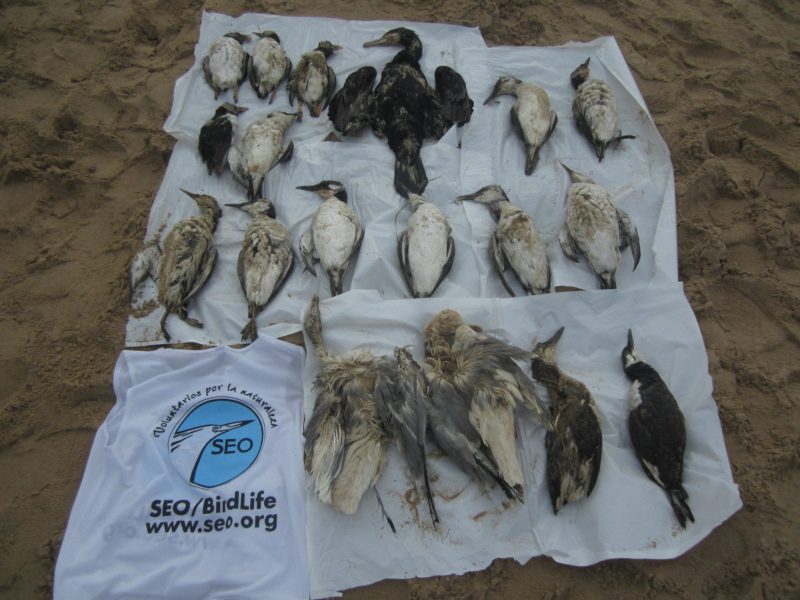The campaign of Coastal Inspection of Shorebirds or ICAO It starts today. Since the beginning of 2024, and with a particular incidence in the first week of February, high mortality of guillemots has been observed along the entire Atlantic and Cantabrian coast.
This species breeds in more northern areas, mainly in the British Isles, Ireland, Iceland and Scandinavia, and is present on the Iberian coasts during the winter. The first indications point to a poor physical condition of the birds, which reach the coast very weak or dead.
It is very important for SEO/BirdLife and its Seabird Working Group (GTAM) to be aware of these types of episodes. That is why they are calling on citizens to take part in a campaign over the next two weeks – from February 7 to 18. Coastal inspection of shorebirds (ICAO) to record seabird mortality.


The Coastal Inspection of Shorebirds or ICAO is a program to monitor threats to marine fauna (birds, mammals and sea turtles) and consists of carrying out walks along the beaches, recording the specimens that appear on the coast. This is done via the ICAO app, which records the route along a beach and allows you to upload photos and data of the fauna found.
The data provided by the Coastal Inspection of Shorebirds or ICAO They help understand the threats facing seabirds, such as mass mortality due to storms, oil spills or mortality due to accidental capture in fishing gear.
The Coastal Inspection of Shorebirds or ICAO app
With the app of Coastal Inspection of Shorebirds or ICAO, available for download via Google Play and App Store, and developed within the Life Intemares and Life Seabil projects, is available in Spain, Portugal and France in their respective languages. It is an easy-to-use app, with over a thousand registered users, who have collected data on over 2,000 birds found between 2021 and 2023, with an average of 0.65 birds found per kilometer travelled. The most common birds are puffins, razorbills, gannets, gulls, guillemots and cormorants.
The appearance of seabirds on our coasts is common, especially in winter, when it mainly affects wintering birds from the auk group (puffins, razorbills and guillemots). Bad weather conditions have weakened and killed some birds, and some appear on beaches washed away by the tides.
From time to time, mass mortality phenomena occur, such as those recorded on the Atlantic and Cantabrian coasts in the winter of 2022/2023. Thanks to the volunteers who reported birds spotted via the app in January and February 2023 ICAO and from other sources of information collected as part of the Life Seabil project it was recorded how the event particularly affected the Atlantic puffin, of which more than 2,000 dead individuals appeared, mainly in the Cantabrian Sea, Galicia and the Canary Islands.
The information collected by the app Coastal Inspection of Shorebirds or ICAO In addition to characterizing these ‘natural’ phenomena of mass mortality, it also allows us to identify other causes of mortality related to human activities, such as pollution or fishing. And it provides important information on ‘background mortality’, which is important when putting into context unusual mortality events, linked for example to hydrocarbon or plastic spills, such as the recent pellet episode in Galicia.
The routes of the Coastal Inspection of Shorebirds or ICAO along the beaches can be done at any time of the year, although it is encouraged to do this especially over the next two weeks when many birds are expected to appear along the coast. If you find a kissed bird, living in poor condition or dead, it is advisable not to handle it and call 911 or the nearest Wildlife Recovery Center to decide whether to collect the bird.

